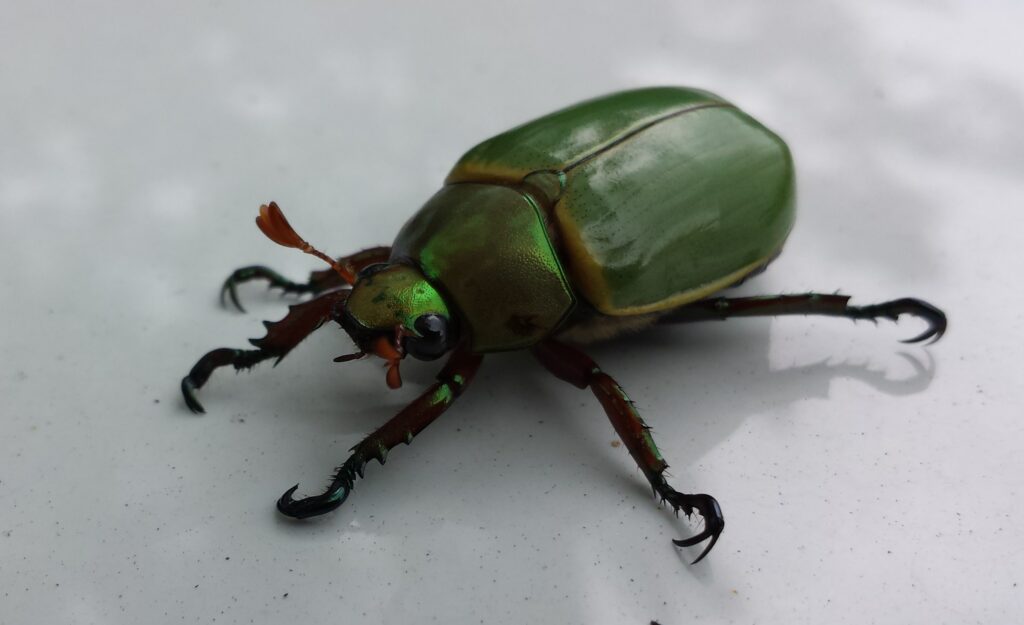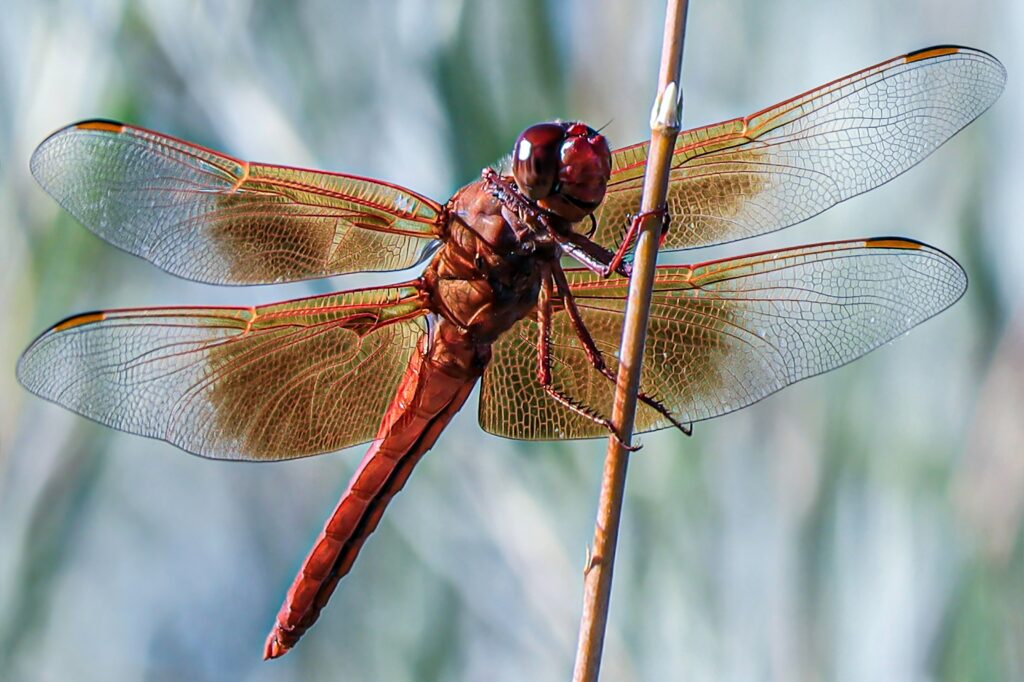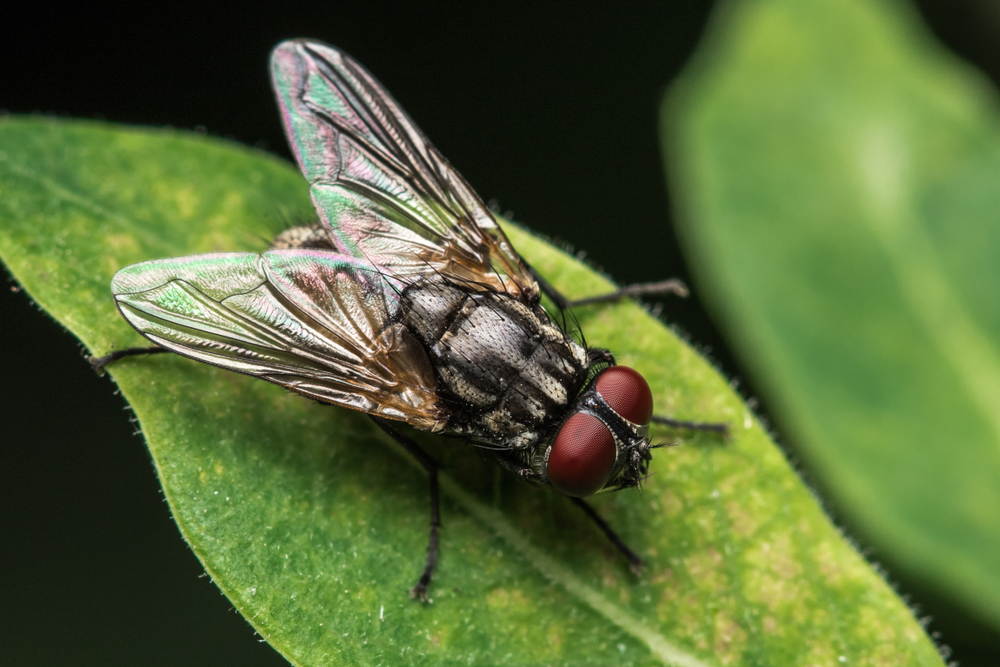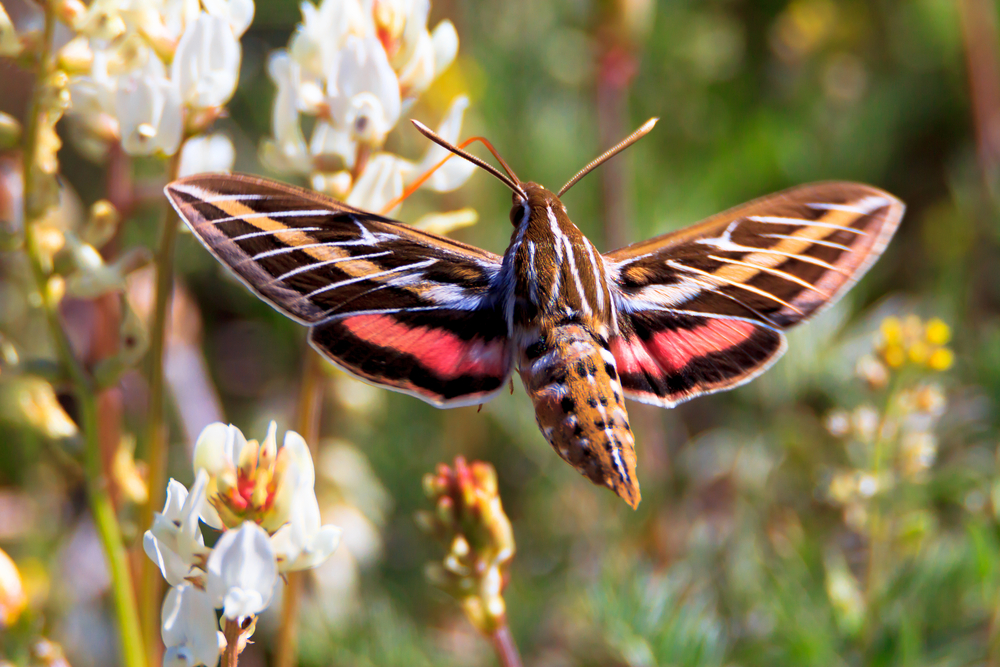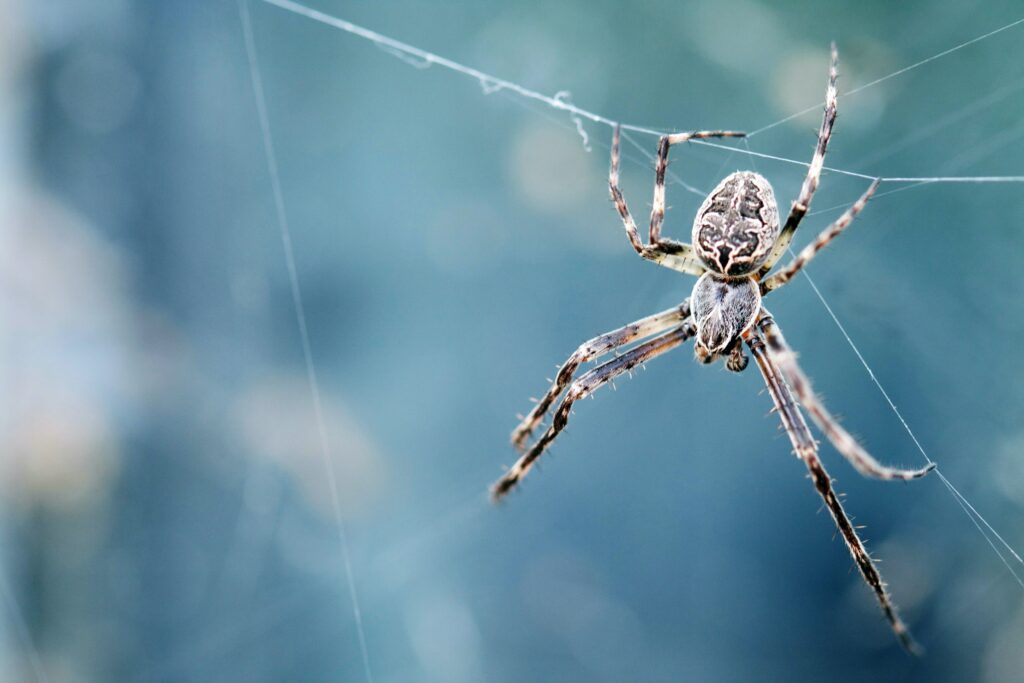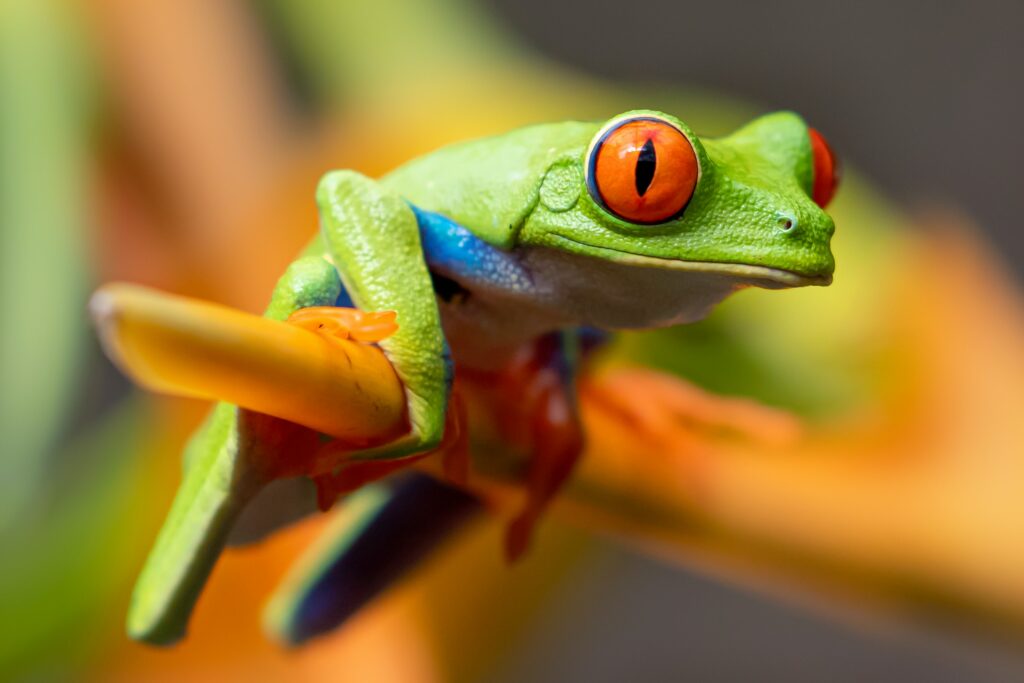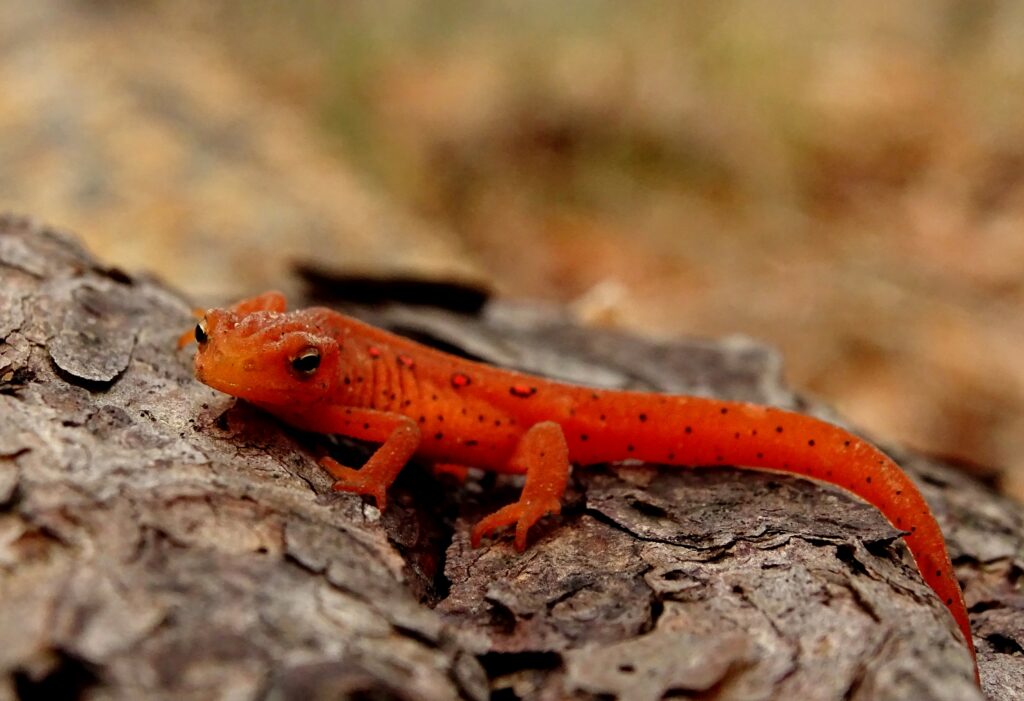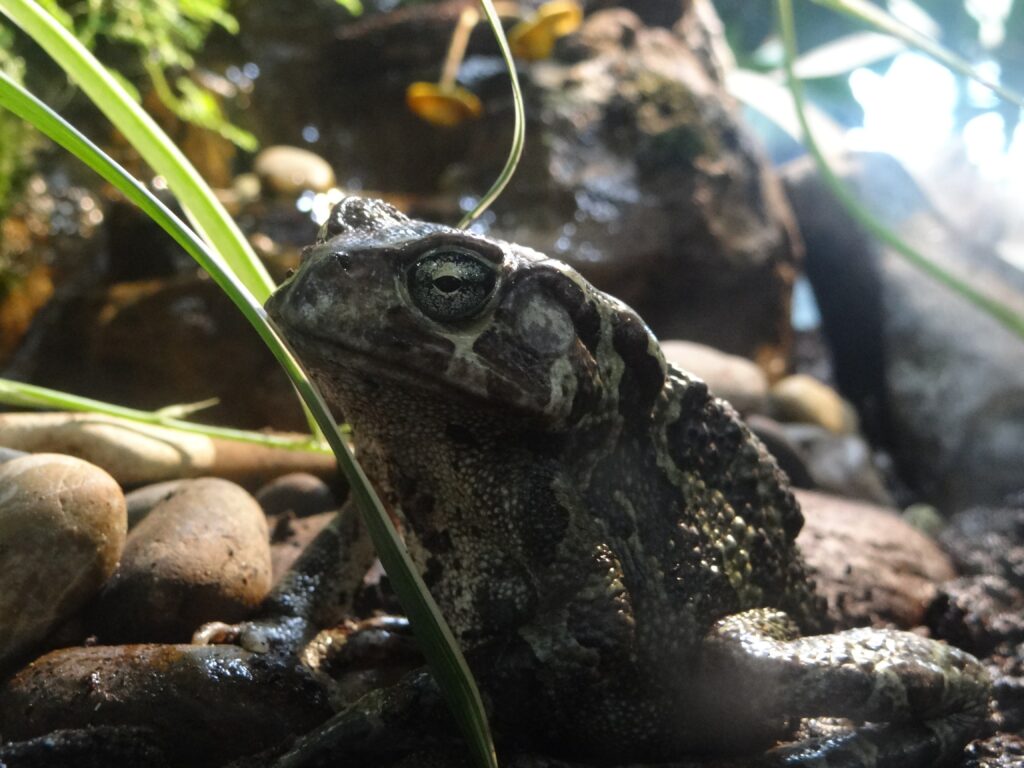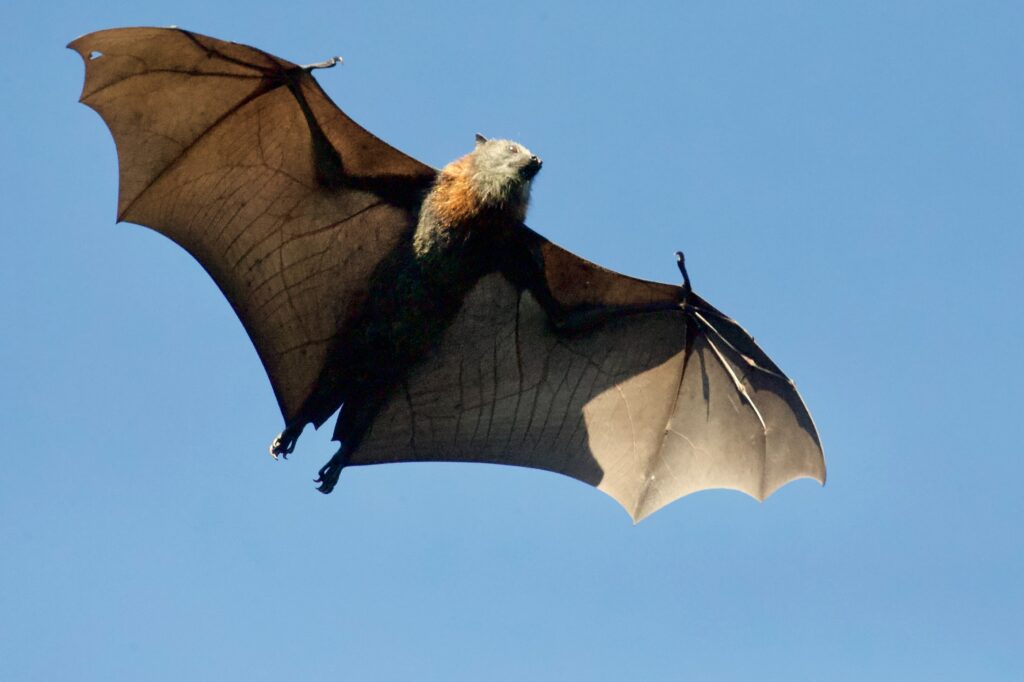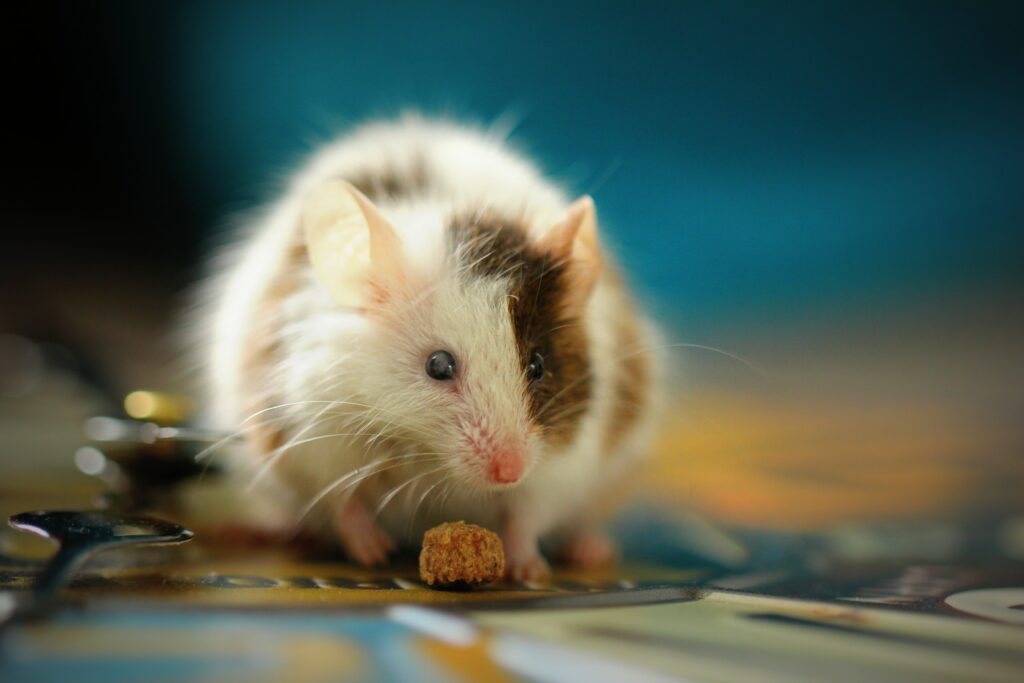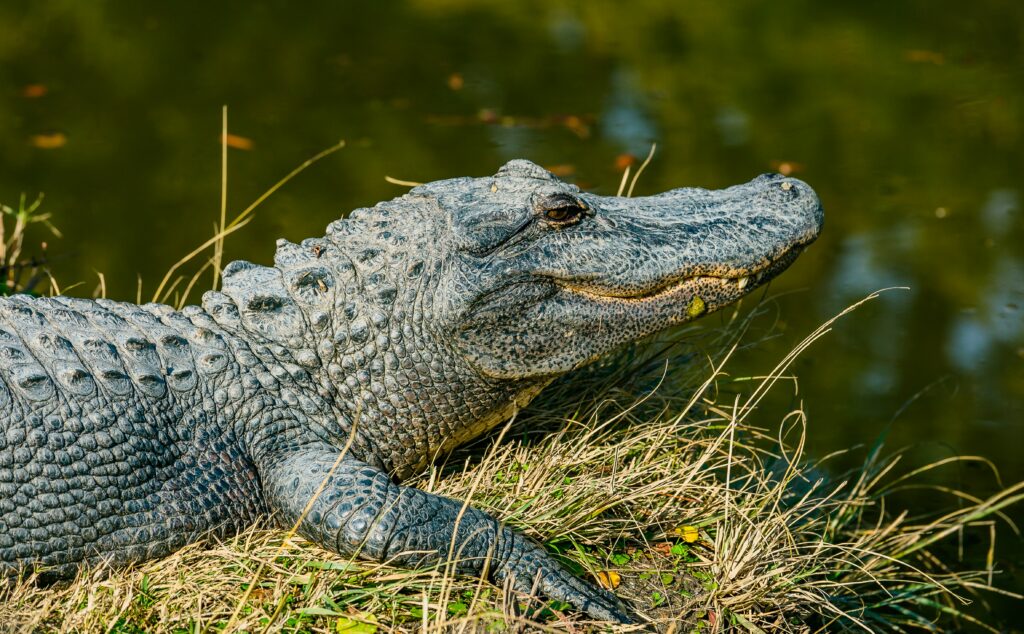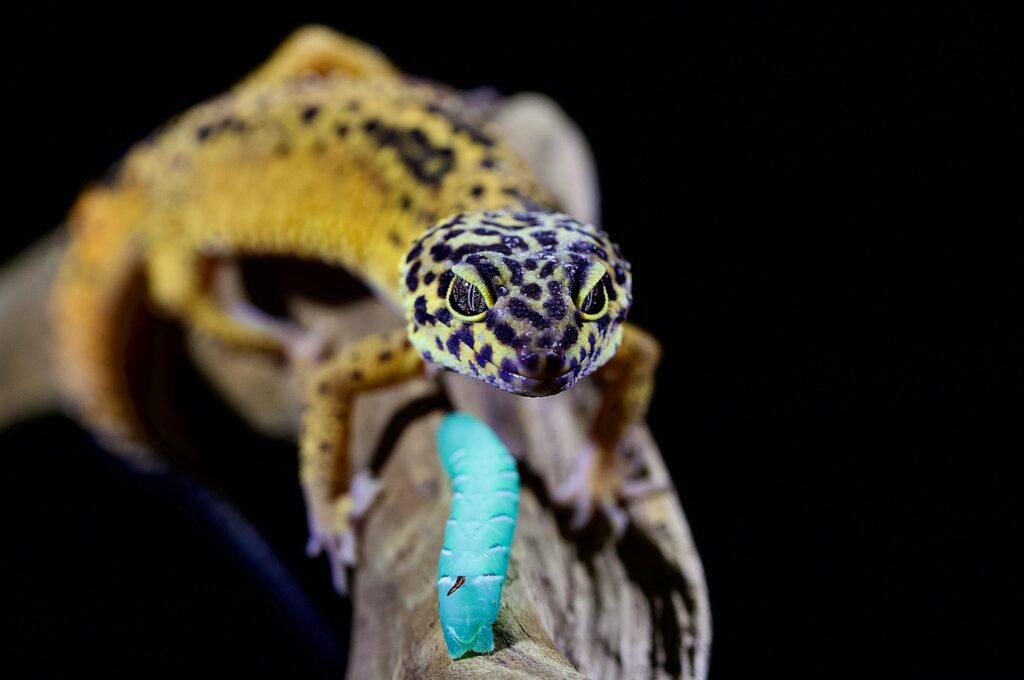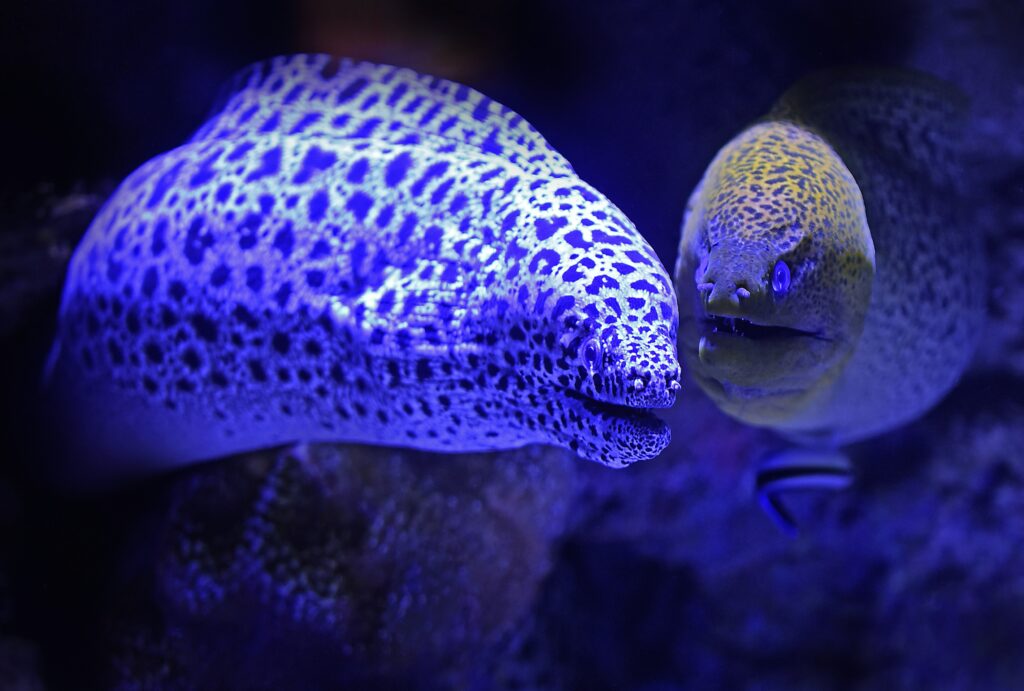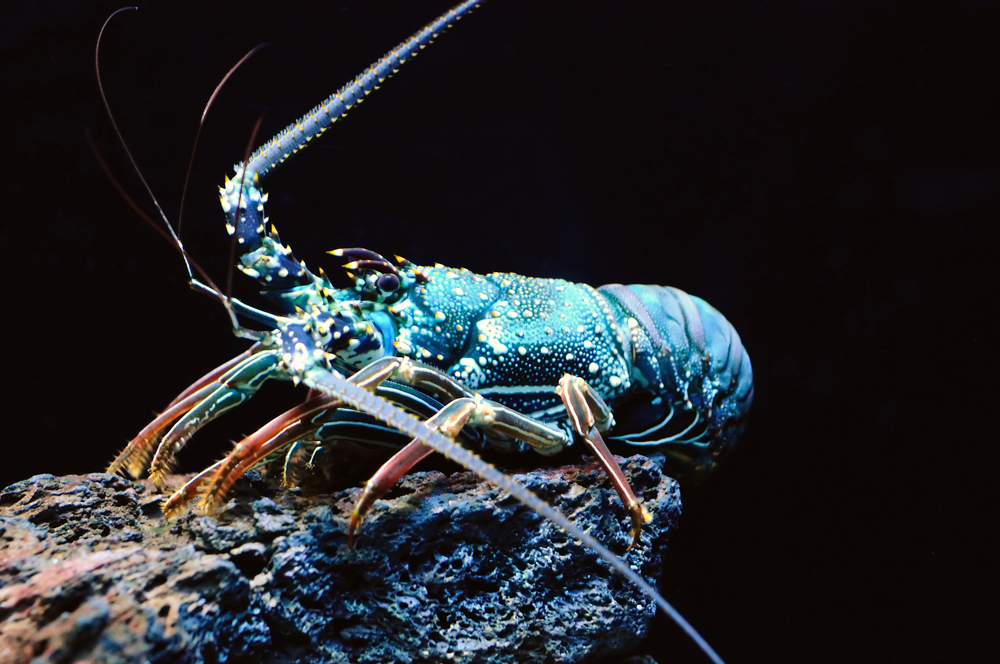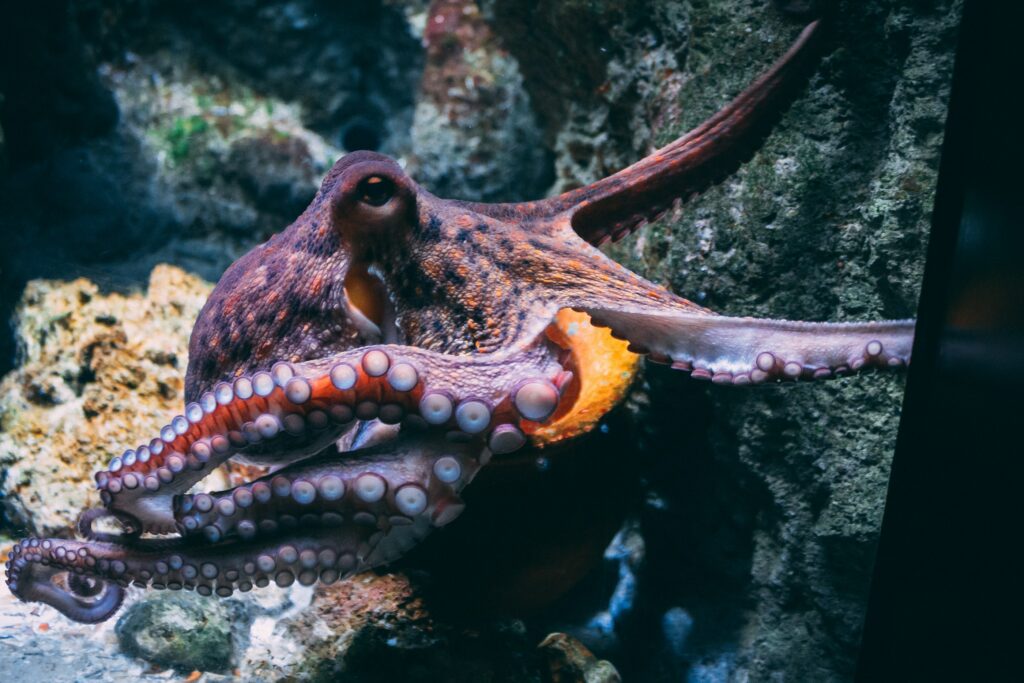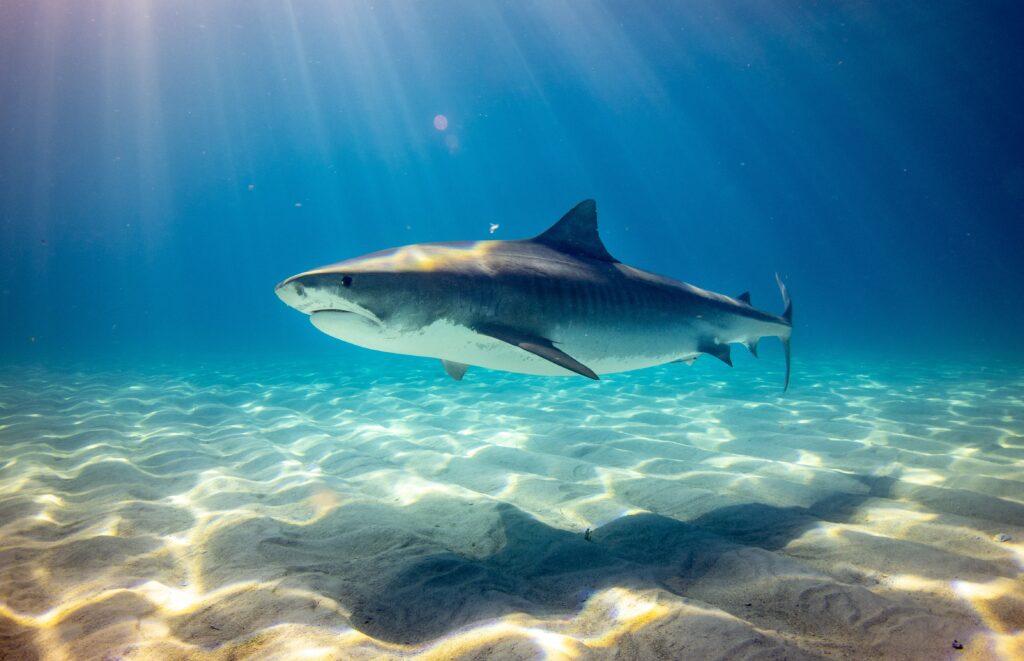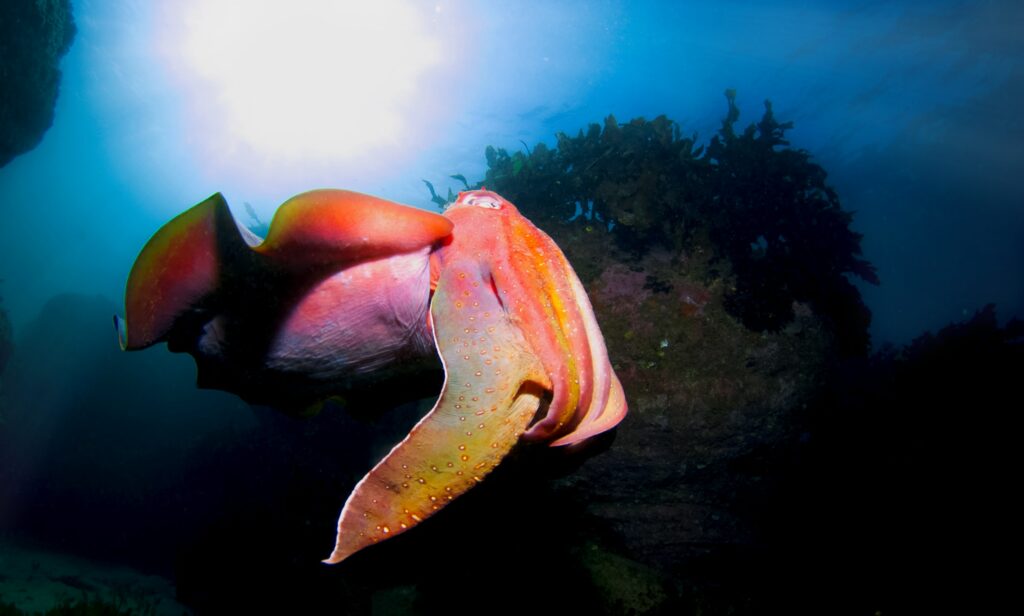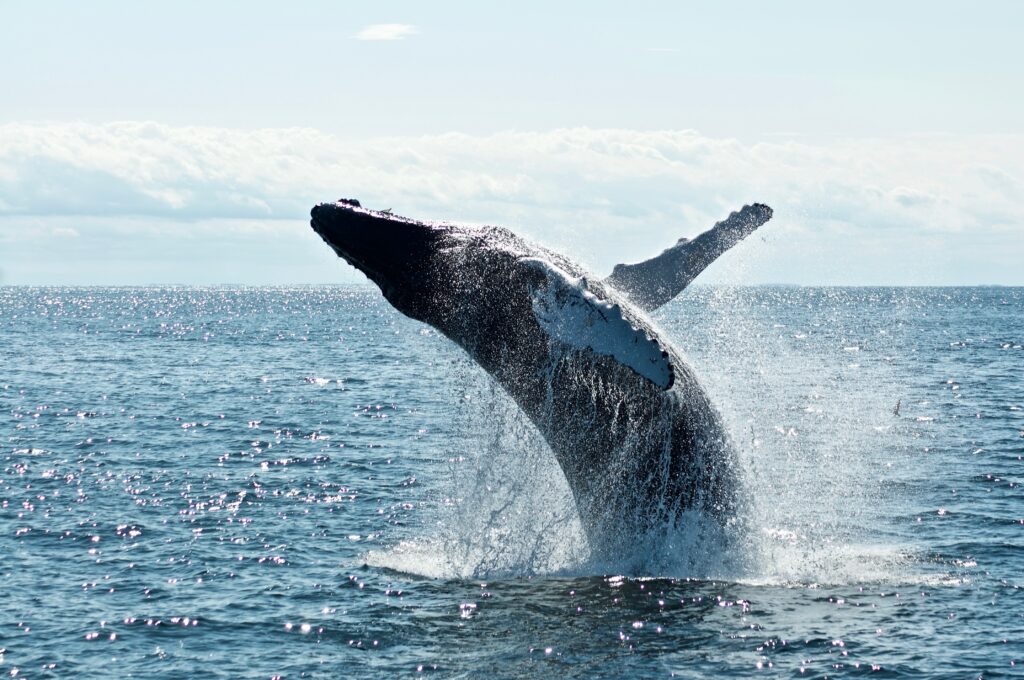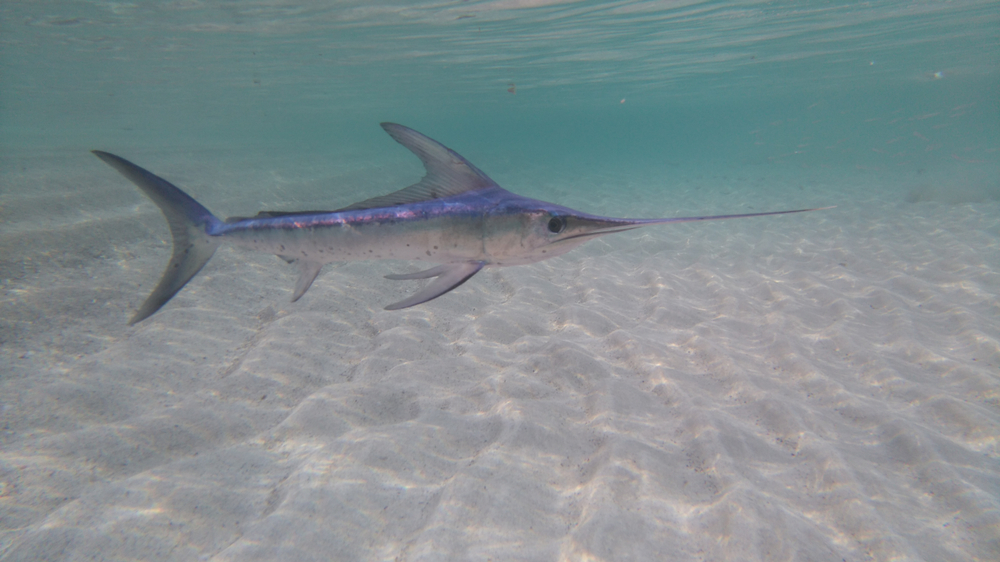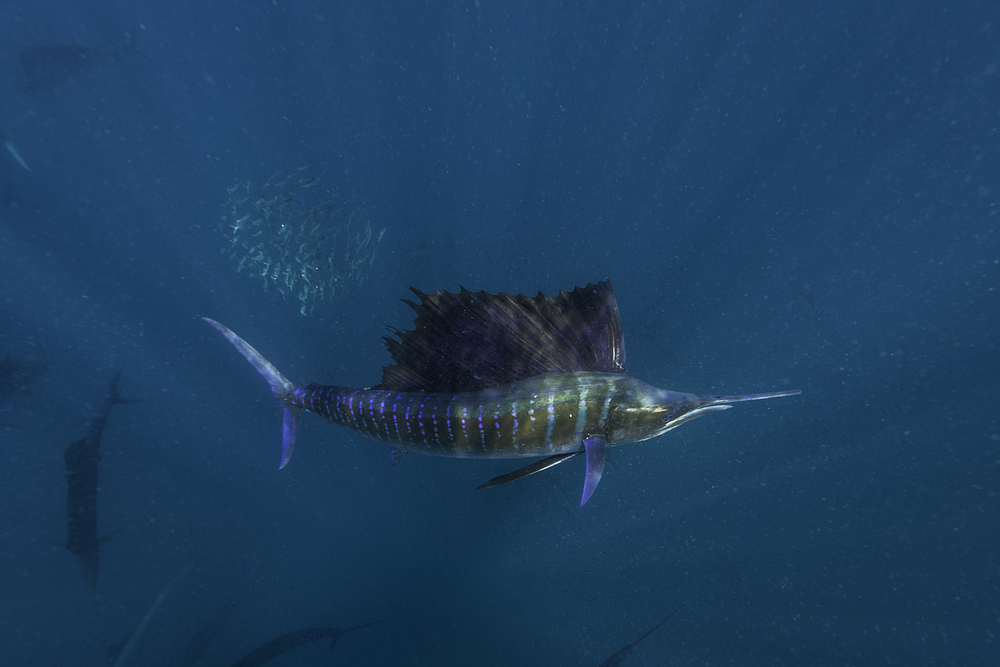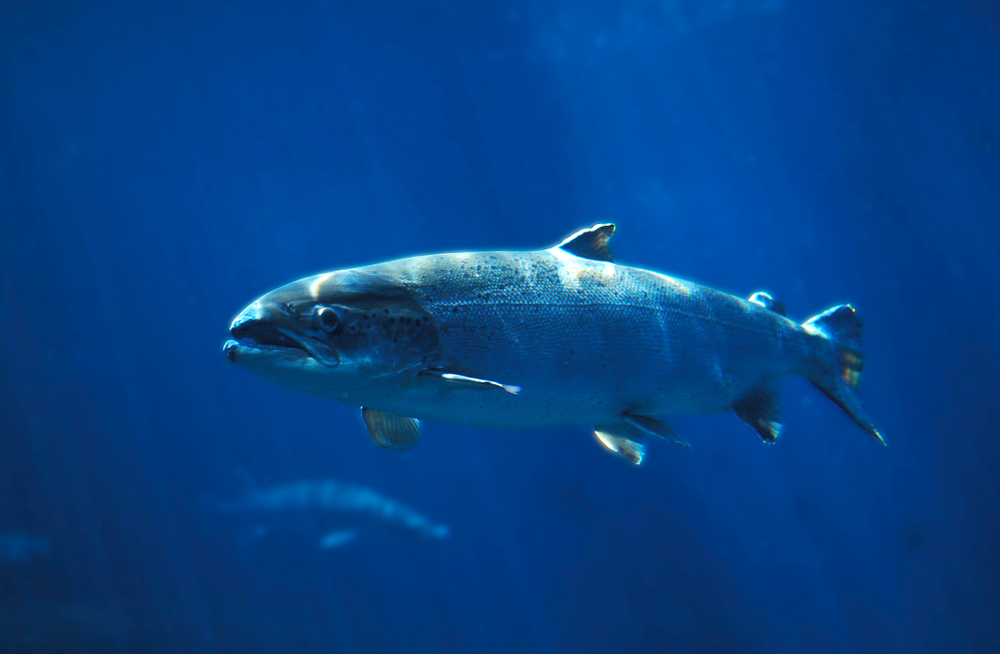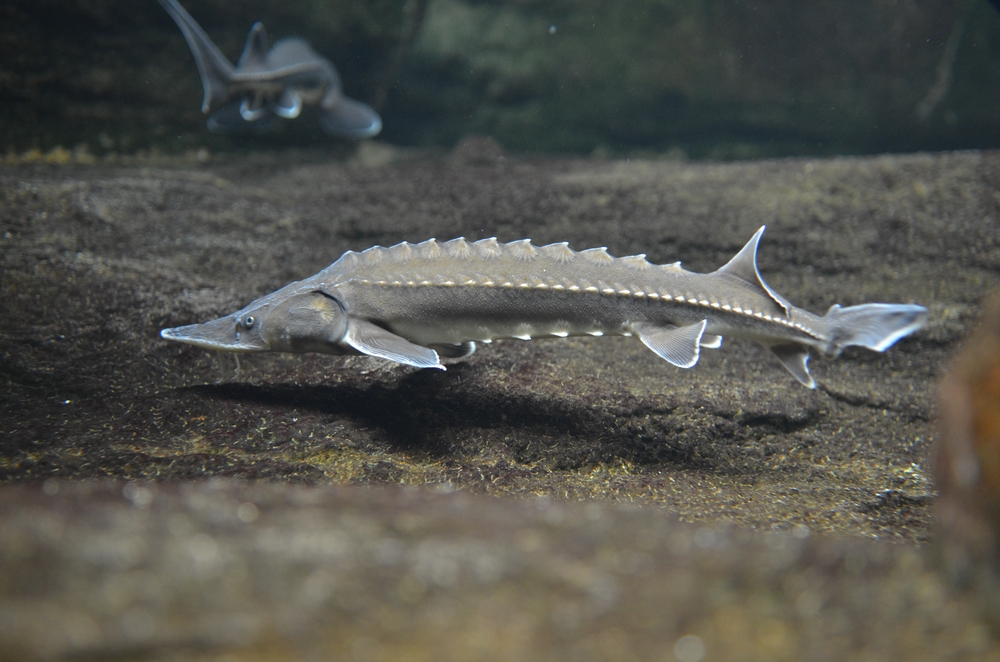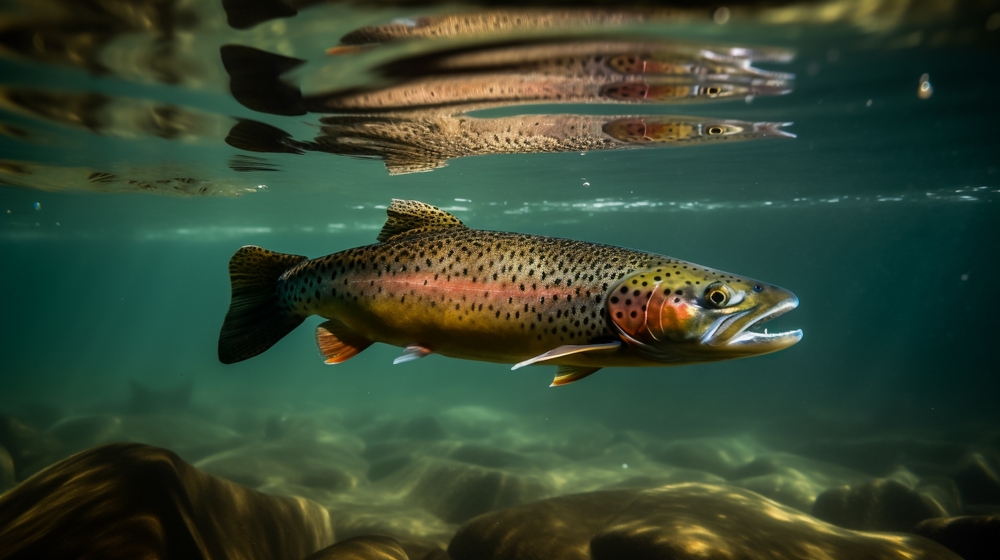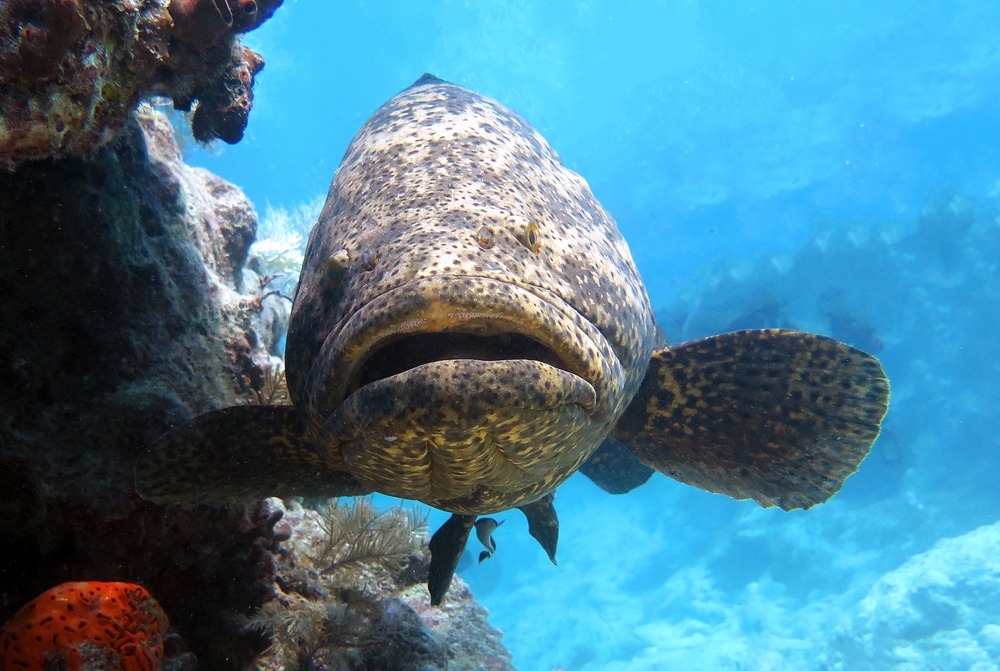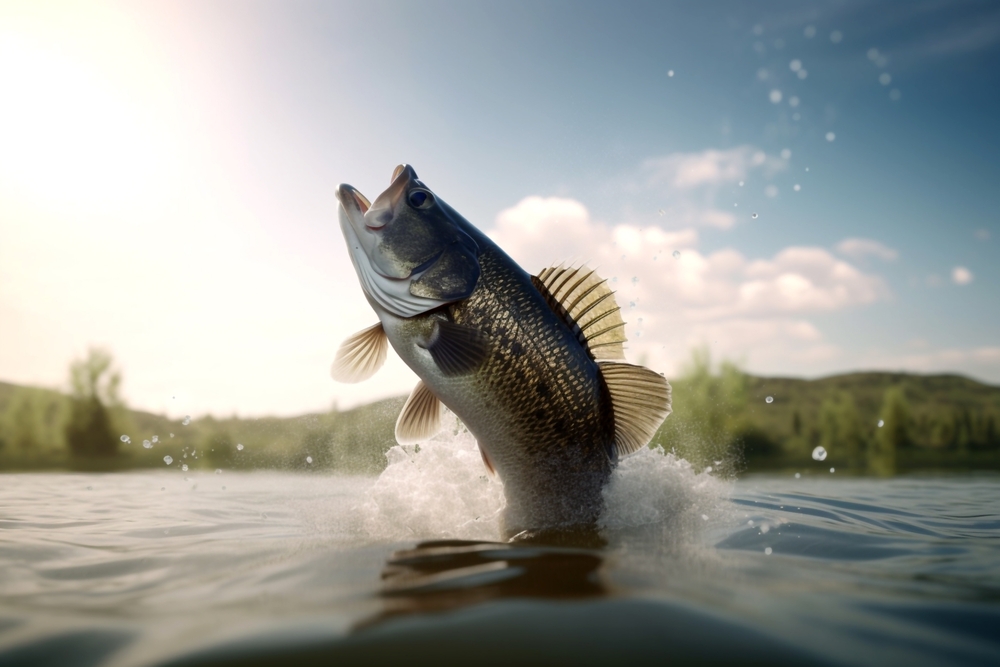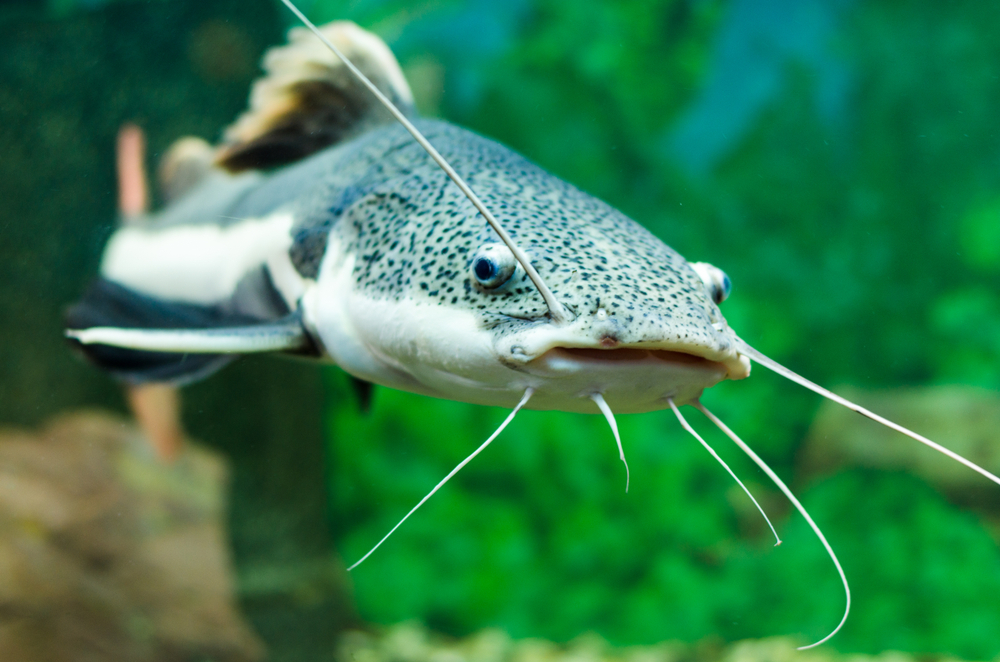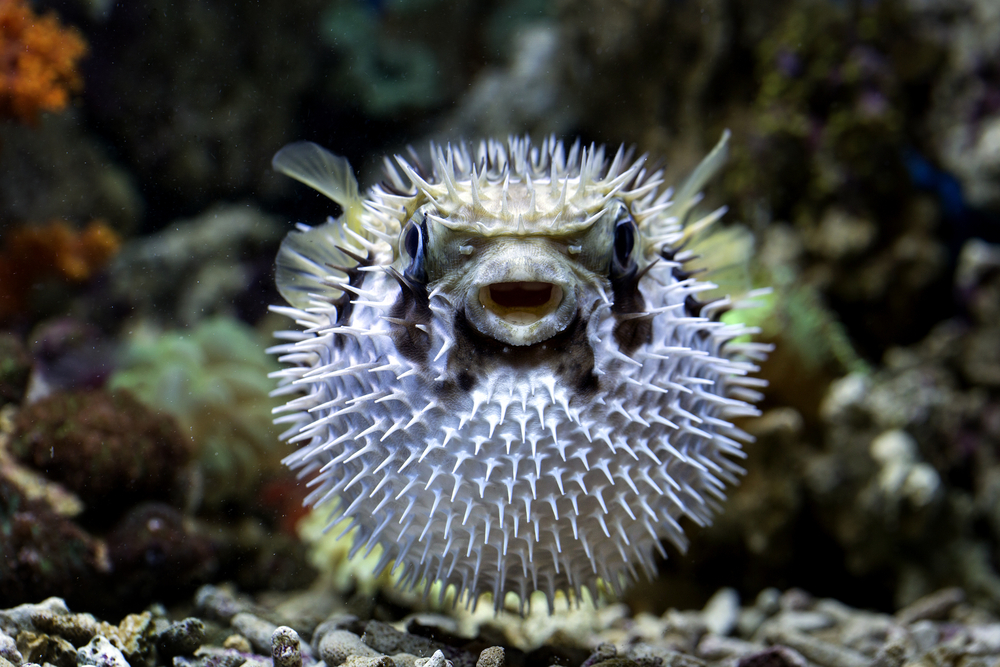The swordfish (Xiphias gladius) is the sole member of the family Xiphiidae. Its closest relatives are marlins and sailfish, which belong to the family Istiophoridae, sharing the elongated bill but differing in fin structure and body shape.
About
The Swordfish (Xiphias gladius) is a powerful ocean predator instantly recognizable by its long, flat, sword-like bill. Belonging to the family Xiphiidae, it is the only member of its genus, making it unique among billfish. Swordfish inhabit tropical and temperate oceans worldwide, migrating vast distances across the Atlantic, Pacific, and Indian Oceans. They are highly prized by both commercial and recreational fishers for their size, strength, and culinary value.
Swordfish are among the largest predatory fish, capable of reaching lengths of up to 15 feet (4.6 m) and weights exceeding 1,000 pounds (450 kg), though most individuals average between 200–600 pounds (90–270 kg). Their streamlined, torpedo-shaped bodies are built for speed, while their iconic “sword” is used to slash and stun prey such as squid, mackerel, and other schooling fish before consumption.
Unlike many fish, adult swordfish lack scales and teeth, relying instead on their bill and speed to capture prey. They are known for their wide vertical migrations, swimming near the surface at night to feed and diving to depths of 2,000 feet (610 m) during the day. Special adaptations, such as heat-generating tissue near their eyes and brain, enhance vision in deep, cold waters, making them highly efficient hunters.
Swordfish are solitary by nature, though they may be found in loose aggregations when prey is abundant. They spawn in warm waters, with females capable of releasing millions of eggs during a season. Their rapid growth and broad distribution have helped them remain resilient despite heavy fishing pressures.
Culturally and economically significant, swordfish are staples in global seafood markets. However, concerns about overfishing and bycatch have led to international conservation measures. Their blend of speed, strength, and iconic appearance makes them one of the ocean’s most legendary fish.
Physical Characteristics
Swordfish are large, powerful ocean predators, easily identified by their elongated, sword-like bill.
Body:
They have a robust, elongated, and streamlined body built for speed and endurance in open waters. Their head is long with a distinctive flattened bill, which makes up nearly one-third of their body length.
Coloration:
Swordfish are dark metallic blue to brownish on the back, fading to lighter shades and silvery white on the belly. This countershading provides camouflage in pelagic waters.
Bill (Sword):
The flattened, sharp-edged bill is used to slash at schools of prey, stunning or injuring fish before consumption. Unlike related species such as marlins, the swordfish’s bill is broader and flatter.
Fins:
They possess a tall, rigid dorsal fin near the front of the body and a much smaller second dorsal fin farther back. Their pectoral fins are long and narrow, while the tail fin is crescent-shaped, allowing bursts of speed.
Size:
Swordfish are among the largest billfish, typically measuring 6–10 ft (1.8–3 m), with some individuals exceeding 15 ft (4.6 m).
Weight:
Most adults weigh 150–300 lbs (68–136 kg), though exceptionally large specimens can surpass 1,000 lbs (450 kg).
The swordfish’s streamlined body, immense size, and iconic blade-like bill make it one of the most distinctive and formidable predators of the open ocean.
Reproduction
Swordfish reproduce through external fertilization in warm, open ocean waters, with prolific spawning ensuring species survival.
Mating and Courtship:
Spawning occurs mainly in tropical and subtropical regions, often during warmer months. Swordfish do not form long-term pairs; instead, males and females gather in loose groups during spawning seasons.
Spawning:
Females are highly fecund, capable of releasing 1–29 million eggs per season depending on size. Eggs and sperm are released into the water column simultaneously, where fertilization takes place externally.
Eggs and Development:
The fertilized eggs are buoyant and hatch within 2–3 days in warm waters. Newly hatched larvae are only a few millimeters long and highly vulnerable to predation.
Larval Stage:
Larvae grow rapidly, feeding on plankton and other microscopic organisms. They undergo dramatic morphological changes, including the development of the long bill that defines the adult form.
Maturity:
Swordfish reach sexual maturity at about 5–6 years of age, with females generally maturing later and growing larger than males.
The swordfish’s reproductive strategy of producing millions of eggs and rapid larval growth helps offset high mortality rates in the open ocean environment.
Lifespan
Swordfish are moderately long-lived pelagic predators, with survival shaped by both natural and human pressures.
Lifespan in the Wild:
They typically live about 9–12 years, though some individuals may reach up to 15 years. Females generally live longer and grow larger than males.
Lifespan in Captivity:
Swordfish are not kept in captivity due to their large size, speed, and migratory nature, making long-term observation outside the wild nearly impossible.
Threats to Longevity:
Fishing pressure is the greatest threat to swordfish survival, as they are heavily targeted by commercial and recreational fisheries. Natural predators such as sharks and killer whales also prey on juveniles and occasionally adults.
The swordfish’s lifespan, while shorter than some other large fish, is balanced by rapid growth and high reproductive output, ensuring population resilience when managed sustainably.
Eating Habits
Swordfish are powerful predators of the open ocean, with feeding behaviors adapted to their large size and hunting style.
Diet:
They feed primarily on pelagic fish such as mackerel, herring, bluefish, and tuna, as well as squid and other cephalopods. Their broad diet allows them to thrive across oceanic regions.
Feeding Behavior:
Swordfish use their long, flattened bill to slash through schools of fish, stunning or injuring prey before circling back to consume them. This technique allows them to tackle larger, faster-moving prey.
Foraging Strategy:
They are mostly solitary hunters, ranging widely across oceans. Swordfish dive deep—often over 1,600 ft (500 m)—during the day to feed on squid and rise toward the surface at night to hunt schooling fish.
Role in the Ecosystem:
As apex predators, swordfish regulate populations of mid-sized pelagic fish and squid, playing a critical role in balancing marine food webs.
The swordfish’s specialized bill, wide-ranging foraging, and deep-diving behavior make it one of the ocean’s most formidable and adaptable hunters.
Uniqueness
Swordfish are iconic billfish, remarkable for their specialized anatomy and extreme oceanic adaptations.
Iconic Bill:
Their long, flattened “sword” is broader and flatter than that of marlins or sailfish, designed for slashing prey rather than spearing.
Extreme Speed and Power:
Streamlined bodies and crescent-shaped tails allow bursts of speed, making them among the ocean’s fastest predators.
Thermal Adaptation:
Swordfish possess a special organ near the eyes that warms their brain and eyes, enhancing vision and hunting efficiency in deep, cold waters—a rare trait among fish.
Rapid Growth:
They grow quickly, reaching over 3 ft (1 m) in their first year, an adaptation that reduces vulnerability to predators.
Solitary Lifestyle:
Unlike some billfish that school or hunt cooperatively, swordfish are typically solitary, ranging widely across oceans.
The swordfish’s blend of speed, unique heat-generating organ, and iconic sword-like bill makes it one of the most unique and specialized predators of the open sea.
Be the First to Share Photos of This Species.
FAQ’s
1. What species is closest to the swordfish?
2. How does the swordfish compare to other species in the same family?
Unlike marlins and sailfish, swordfish have a flatter, broader bill and lack pelvic fins. They are also more solitary, dive deeper, and possess a special heat organ for deep-sea hunting.
3. What national parks provide the best opportunities to see a swordfish?
Swordfish can sometimes be seen in marine reserves and national parks with deep offshore waters, such as Biscayne National Park (Florida), Channel Islands National Park (California), and Papahānaumokuākea Marine National Monument (Hawaii).
4. In what parts of the world can you find swordfish?
Swordfish inhabit tropical, temperate, and subtropical waters of all major oceans. They range widely, from the Atlantic and Pacific to the Indian Ocean and the Mediterranean Sea.
5. How many types of swordfish are there?
There is only one recognized species of swordfish, Xiphias gladius. However, they show wide variation in size, habitat range, and migratory patterns across the globe.


